Feb. 22 update on COVID-19 in MN: Vaccination pace flat; pandemic picture solid

3 things to know:
Vaccination pace flat; weather-delayed shipments on the way
Overall pandemic metrics look good; 1 additional death
State officials optimistic about sport fans returning to venues
Updated: 2:44 p.m.
Minnesota’s COVID-19 vaccination effort is struggling again for traction following a mild upswing. Officials, though, are anticipating a busy week as some 45,000 weather-delayed shots make their way into the state atop the expected 100,000 doses from the feds.
The state Health Department on Monday reported about 20,000 new vaccinations. The vast majority of those, however, were second doses.
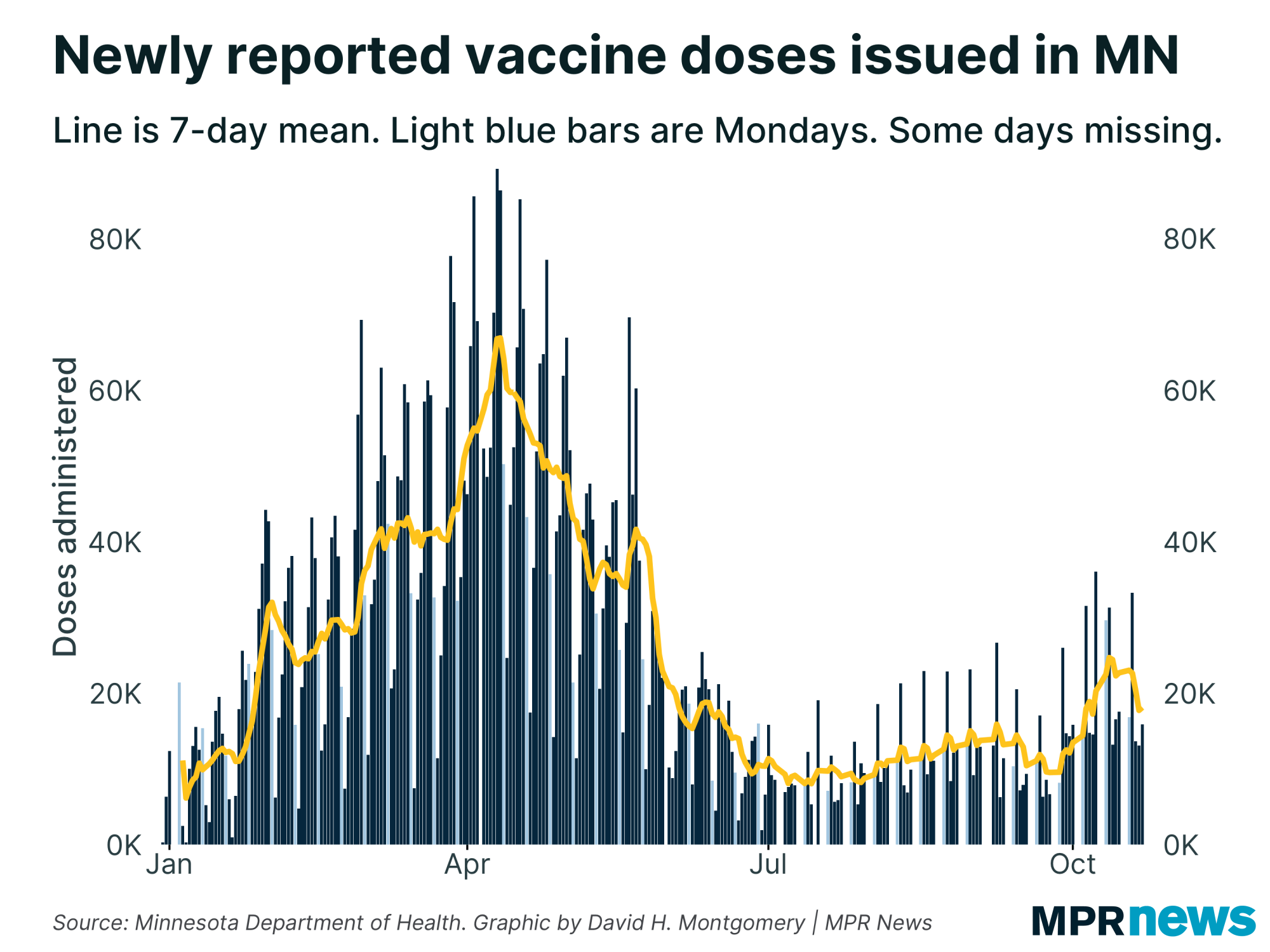
State public health leaders last week warned the cold snap that gripped the nation recently would also delay vaccine shipments to Minnesota, potentially depressing vaccination counts in the short-term. Some clinics were postponed.
“The good news is that we’re seeing a return to normal on that front,” Kris Ehresmann, the state’s infectious disease director, told reporters Monday. “We hope to be back to normal operations and scheduling in the next week or so.”
Create a More Connected Minnesota
MPR News is your trusted resource for the news you need. With your support, MPR News brings accessible, courageous journalism and authentic conversation to everyone - free of paywalls and barriers. Your gift makes a difference.
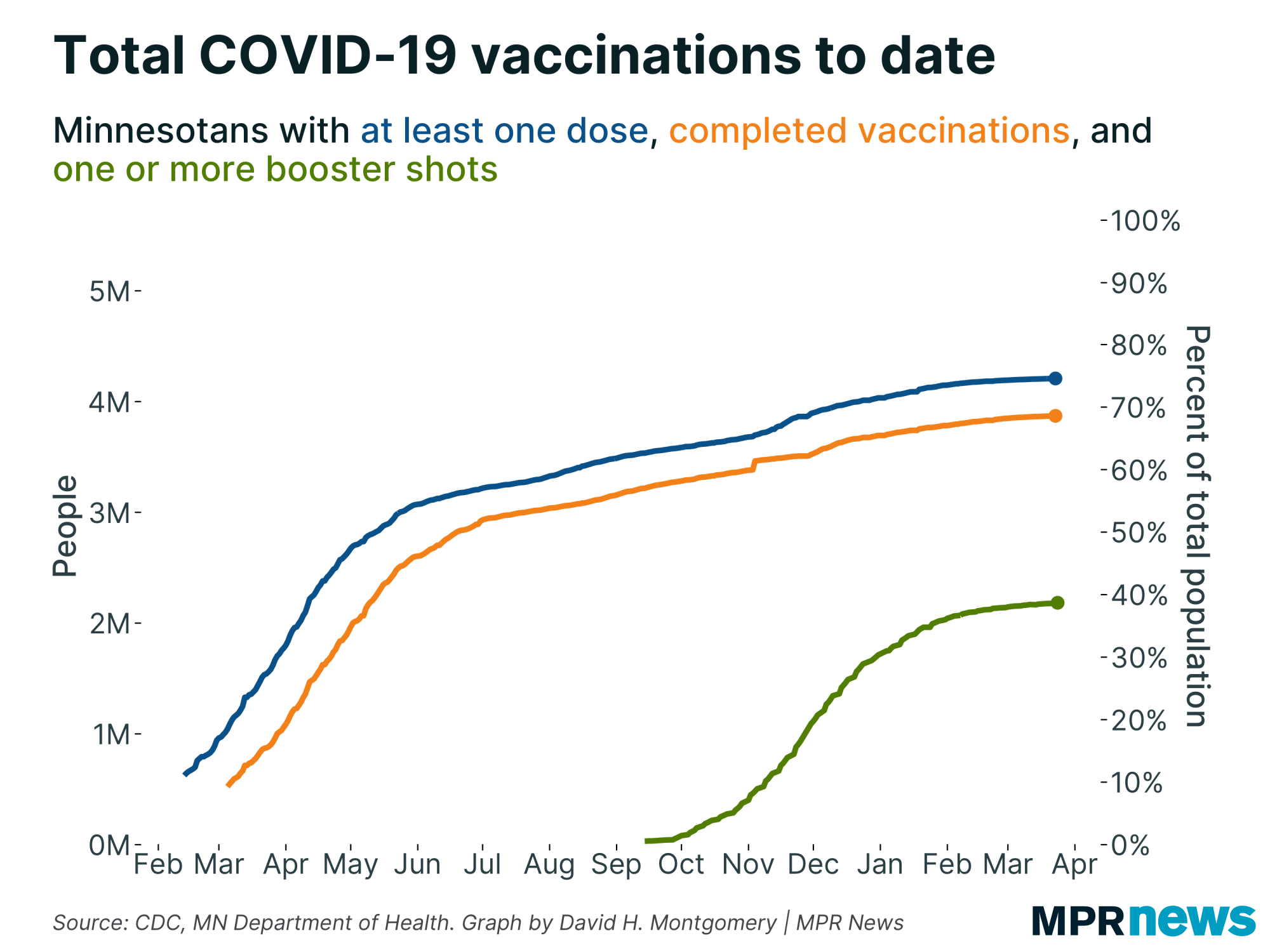
About 13.7 percent of Minnesotans had received at least one dose as of the Monday update, with about 6.4 percent completely vaccinated. Nearly 42 percent of Minnesotans 65 and older have received at least one shot.
Minnesota is currently ranked 19th among states in doses administered per 100,000 people, according to data collected by the federal Centers for Disease Control and Prevention. Minnesota had been as low as 25th on that ranking.
Pandemic metrics remain promising
Vaccination questions aside, Minnesota’s COVID-19 numbers show the state continuing on a steady, positive path. Monday marked the first day that all public middle and high schools were allowed to reopen their buildings to students.
Hospitalization rates are particularly encouraging. There were 235 people with COVID-19 in Minnesota hospitals as of Sunday. Forty-eight needed intensive care, dropping below 50 for the first time since early April.
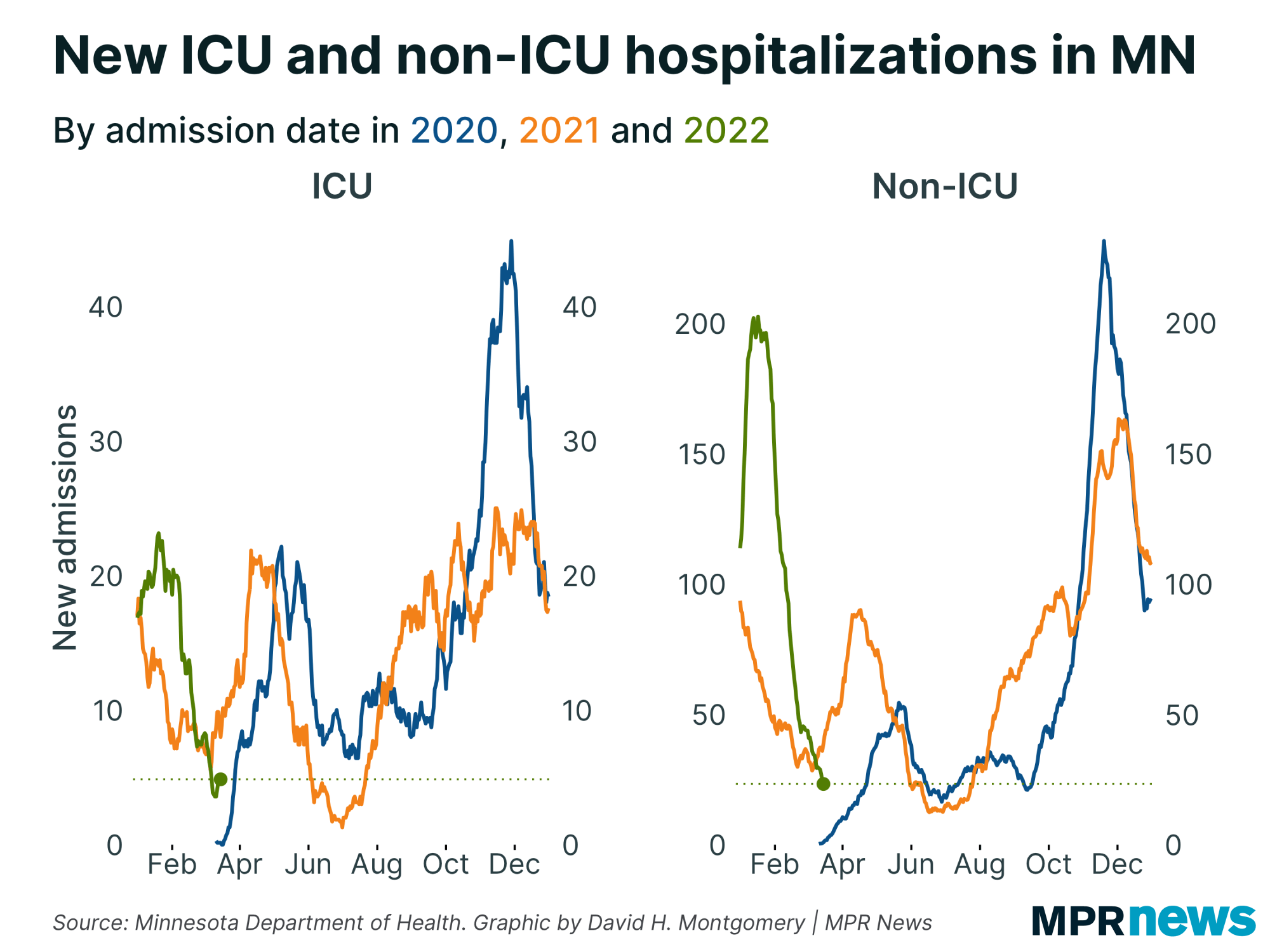
The seven-day hospital admissions trend for people with COVID-19 has also receded to September levels.
Known, active cases slipped back below 7,000. The overall trend remains solid, hovering around late September levels.
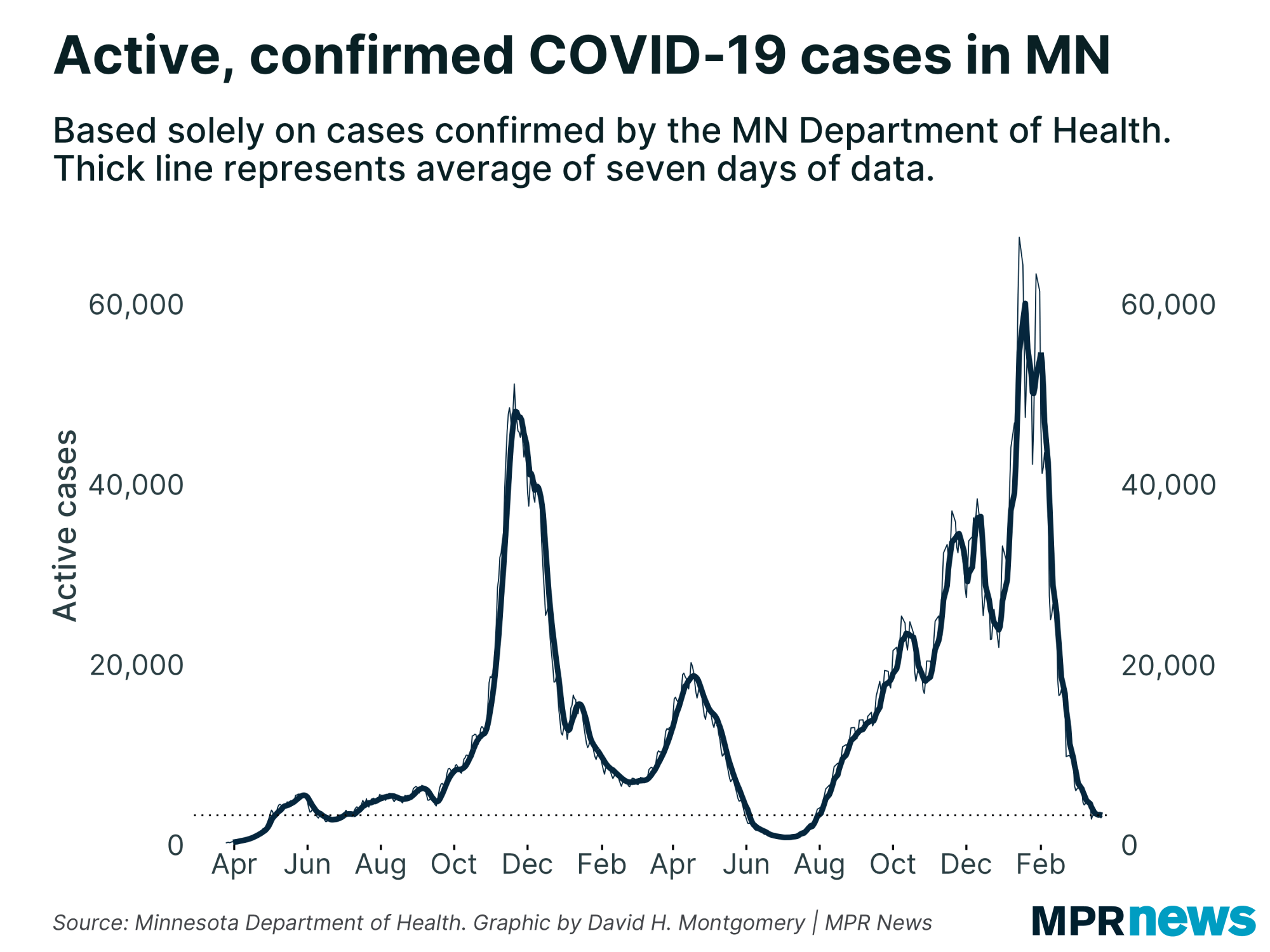
One newly reported death raised Minnesota’s toll to 6,433. Among those who’ve died, about 63 percent had been living in long-term care or assisted living facilities; most had underlying health problems.

The state has recorded 479,591 total confirmed or probable cases so far in the pandemic, including 561 reported Monday. About 97 percent of Minnesotans known to be infected with COVID-19 in the pandemic have recovered to the point they no longer need to be isolated.
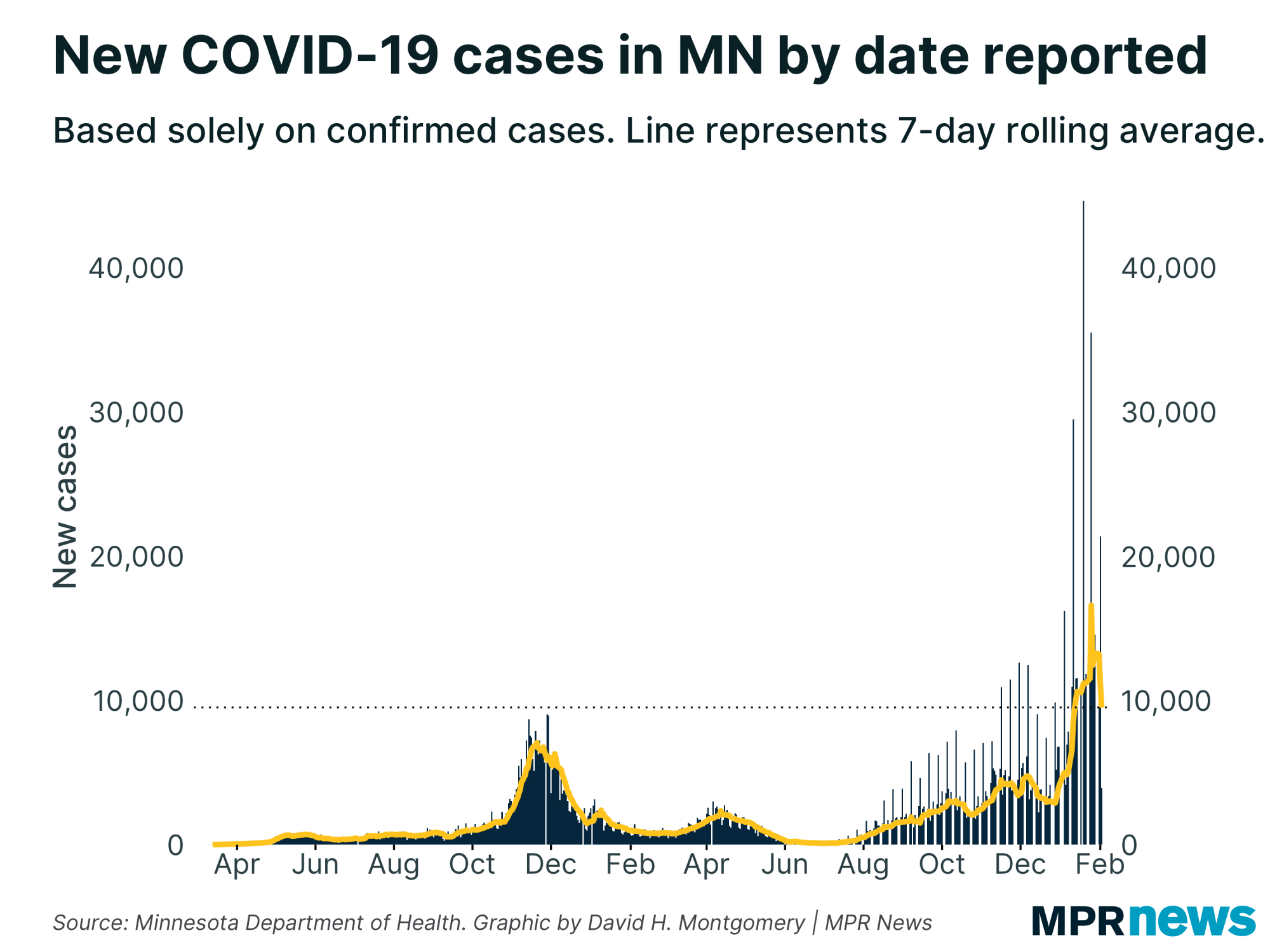
Cases spread across age groups, regions
People in their 20s still make up the age bracket with the state’s largest number of confirmed cases — more than 90,000 since the pandemic began, including nearly 48,000 among people ages 20 to 24.
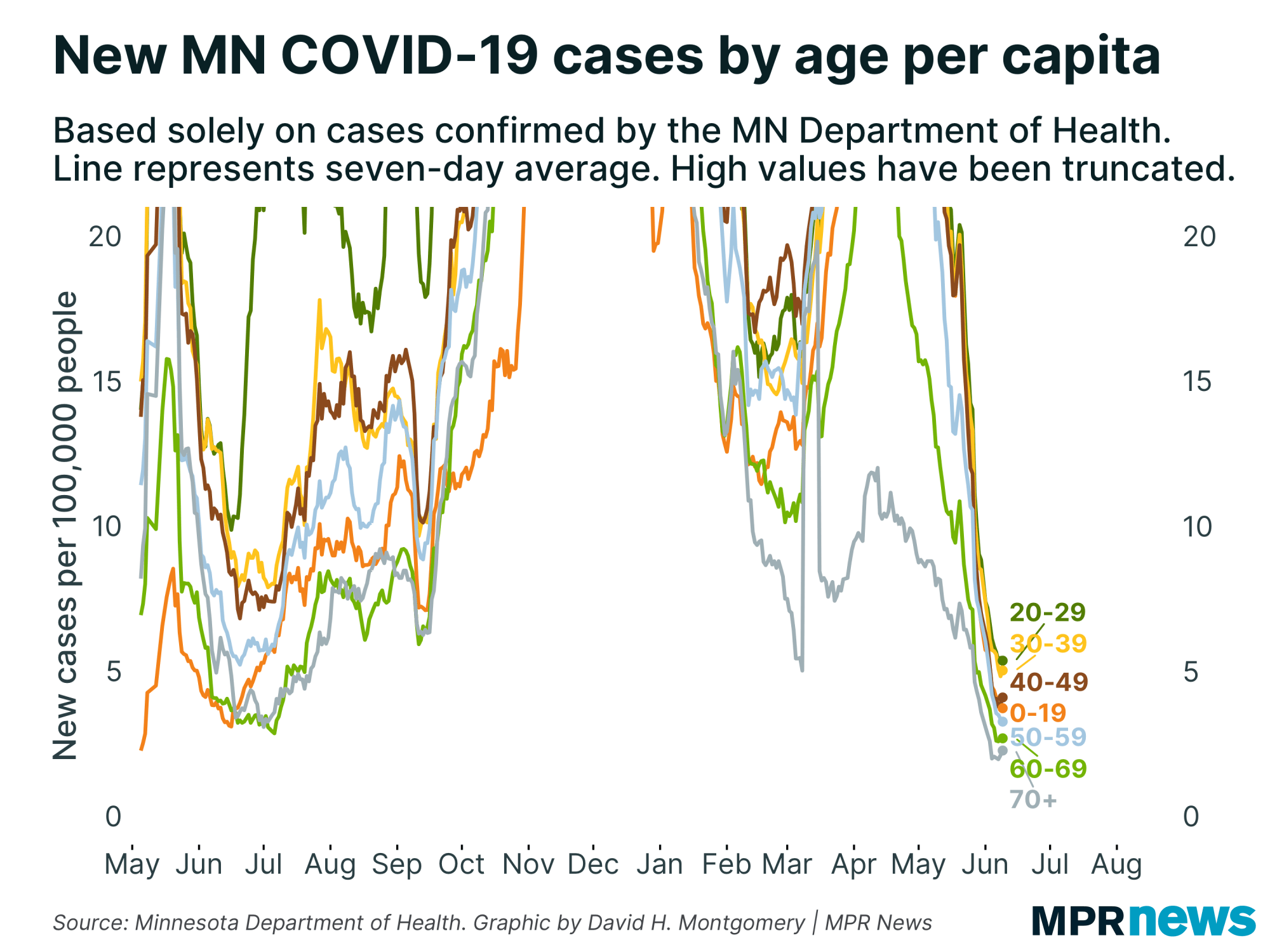
The number of high school-age youth confirmed with the disease has also grown, with more than 37,000 total cases among those ages 15 to 19 since the pandemic began.
Although less likely to feel the worst effects of the disease and end up hospitalized, experts worry youth and young adults will spread it unknowingly to older relatives and members of other vulnerable populations.
People can have the coronavirus and spread COVID-19 when they don’t have symptoms.
Regionally, most parts of Minnesota are down significantly from the late November, early December spike as well as a January blip.
There has been an uptick in cases in northwestern Minnesota recently, though it’s unclear why just yet.
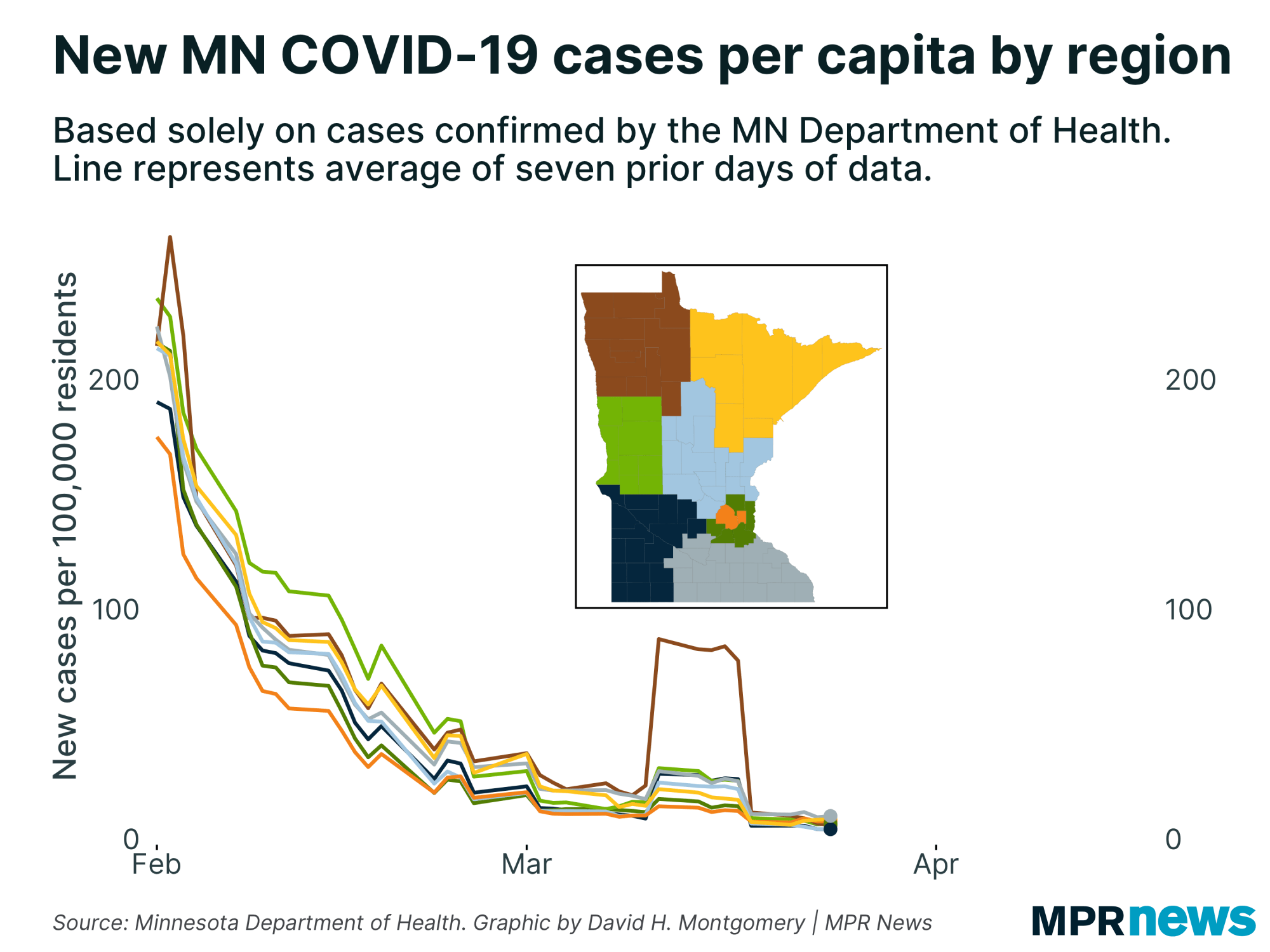
Caseloads still heaviest among people of color
In Minnesota and across the country, COVID-19 has hit communities of color disproportionately hard in both cases and deaths. That’s been especially true for Minnesotans of Hispanic descent for much of the pandemic.
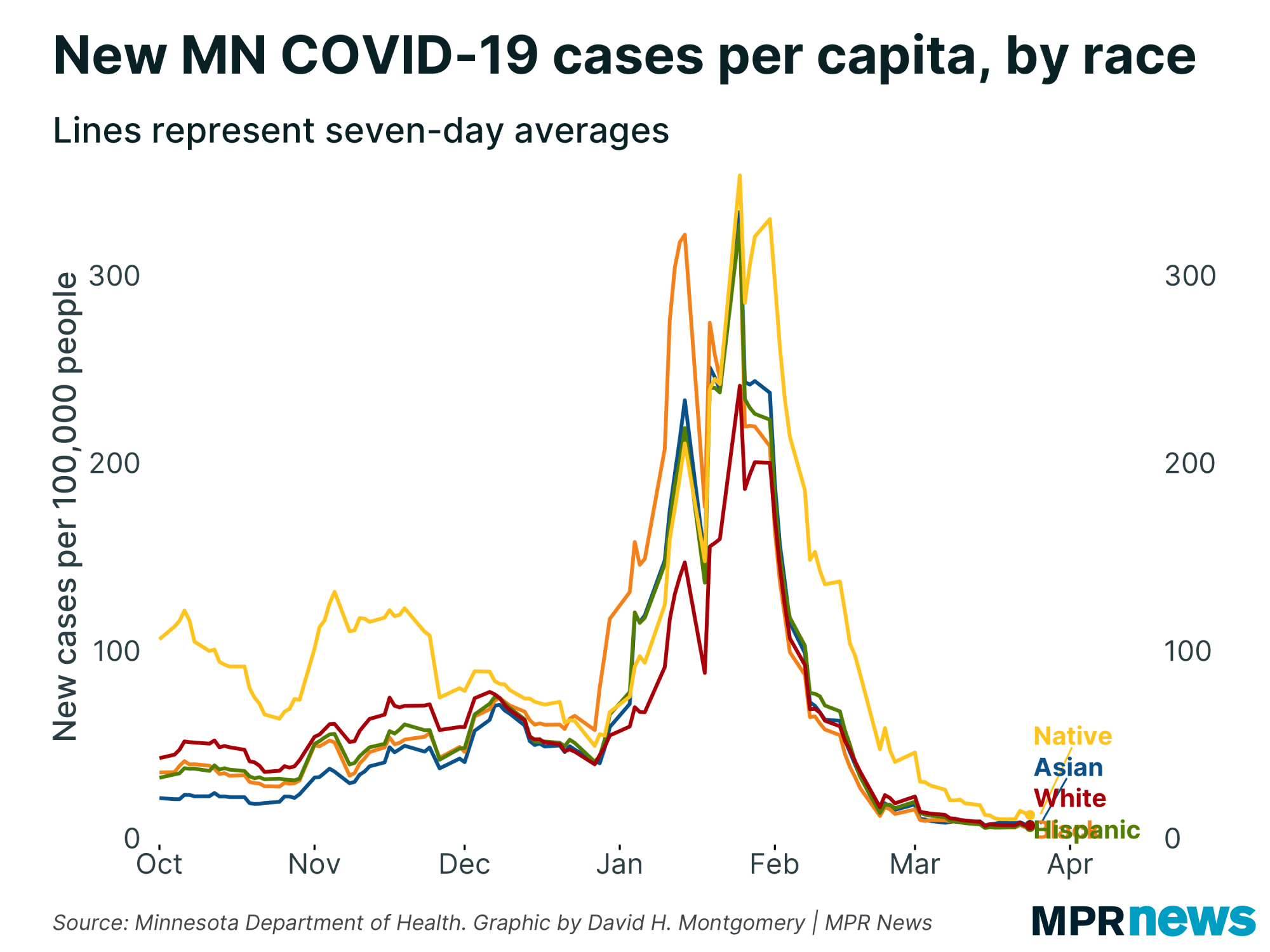
Even as new case counts continue to fall from their late November, early December peaks, the data shows Latino people continue to be hit hard.
Distrust of the government, together with deeply rooted health and economic disparities, have hampered efforts to boost testing among communities of color, officials say, especially among unauthorized immigrants who fear their personal information may be used to deport them.
‘Where we all want to go’
State health officials continue to remind Minnesotans that the pandemic is not over yet and that new virus strains circulating in the United States may be more contagious.
Ehresmann on Monday also warned that outbreaks are continuing, noting that there were 39 outbreaks linked to bars and restaurants in January and February, 23 outbreaks linked to gyms and 85 linked to sports.
“There is a risk in any indoor settings that bring people from different households together,” she said, urging Minnesotans to continue to wear masks in indoor gathering spaces, socially distance and otherwise stay vigilant against the disease’s spread.
State officials didn’t have a specific response Monday to news that the Minnesota Twins are proposing to allow 10,000 fans at Target Field when the baseball season starts in early April.
“Directionally, it’s where we all want to go,” Health Commissioner Jan Malcolm said, adding that if Minnesotans keep working to stem the spread and vaccinations continue to ramp up, “we are truly optimistic about the prospect of fans getting into sports venues in 2021.”
COVID-19 in Minnesota
Data in these graphs are based on the Minnesota Department of Health's cumulative totals released at 11 a.m. daily. You can find more detailed statistics on COVID-19 at the Health Department website.
Developments from around the state
Hy-Vee pharmacies join vaccination effort
Hy-Vee pharmacies in Minnesota are joining Walmart and Thrifty White in the Federal Retail Pharmacy Program, Gov. Tim Walz’s office said Monday.
Hy-Vee will administer more than 10,000 doses of the vaccine this week to adults 65 years of age and older at more than 30 Hy-Vee sites in the state, the governor’s office said in a statement.
— MPR News Staff
Klobuchar speaks out about vaccine misinformation
Minnesota Democratic U.S. Sen. Amy Klobuchar joined a local physician and health care administrator on Sunday in the Twin Cities to urge people to accept the science behind COVID-19 vaccines.
Klobuchar said that as more people become eligible for vaccination against the coronavirus, a big challenge will be convincing them to get the protection to help bring the pandemic under control.
She said social media companies, including Facebook, need to do a better job combating falsehoods being circulated to scare people away from the vaccines.
— Mark Zdechlik | MPR News
Vaccine shipment takes roundabout route to reach Minnesota
A weather-delayed shipment of 9,000 doses of the COVID-19 vaccine made it to Minnesota late Friday after a roundabout journey.
In a Twitter thread posted Saturday afternoon, Gov. Tim Walz recounted the saga. He said the doses were supposed to make a relatively short trip from Illinois to Minnesota, but an alert Minnesota National Guard captain tracking the vaccine on Friday morning noticed it had been diverted to Texas for reasons unknown.
There was extra concern given the power outages in the southern U.S., and the need for the vaccine to be stored at extremely low temperatures.
Walz said he spoke with White House officials to sort out the problem, and they were able to work with FedEx to redirect the doses to Memphis, Tenn., and then on to the Twin Cities.
The vaccine arrived Friday night, and Walz said National Guard personnel made late-night drives to vaccination sites in Thief River Falls, Fergus Falls, North Mankato and Rochester in time for those doses to be administered Saturday morning.
— MPR News staff
Top headlines
Mixed opinions on how to allocate Biden aid money: President Joe Biden and other Democrats want the federal government to send most Americans another $1,400 to help them weather the pandemic. But some economists, and even some people set to get the cash, say a better approach would be to target those most in need.
Isolated and at risk, veterans hope COVID vaccine brings return to normalcy: About half of U.S. veterans are over the age of 65 and many have underlying health complications, making them especially vulnerable to the coronavirus.